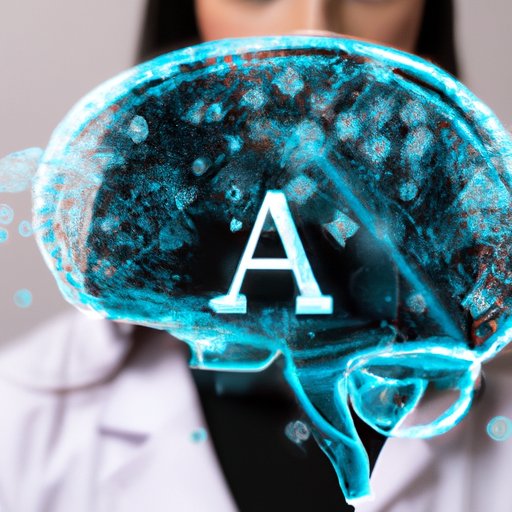Introduction
Artificial intelligence (AI) has been making headlines in recent years, with many industries exploring how this technology can be used to improve their operations. The medical field is no exception, and AI is now being used to revolutionize the practice of radiology. In this article, we will explore the potential impact of AI in radiology, examining both the pros and cons of using this technology to take over the practice.
Could AI Replace Radiologists?
Radiology is a crucial part of the modern healthcare system, allowing doctors to diagnose and treat a wide range of conditions. AI has the potential to revolutionize this practice, by providing more accurate and faster diagnoses than ever before. But could AI replace radiologists altogether?
Overview of AI’s Potential to Take Over Radiology
AI has the potential to make radiology more efficient and accurate. AI algorithms are capable of analyzing large amounts of data quickly, which can be used to identify patterns and anomalies that may not be visible to the human eye. This could make it easier for radiologists to diagnose and treat patients, as well as reduce the amount of time spent on manual analysis.
In addition, AI can be used to automate certain tasks within radiology, such as image processing and segmentation. This could allow radiologists to focus more on diagnosis, while AI takes care of the rest. Finally, AI can be used to provide more personalized treatment plans, as it can analyze patient data in order to determine the best course of action.

How AI is Revolutionizing Radiology
AI is already having a profound effect on radiology, with new applications being developed every day. For example, AI can be used to detect early signs of cancer in medical images, which can help radiologists catch potential diseases earlier. AI can also be used to automate certain processes within radiology, such as image segmentation, which can save time and money.
In addition, AI can be used to interpret medical images more accurately than humans, which can help radiologists make more informed decisions. AI can also be used to create 3D reconstructions of medical images, which can help diagnose complex conditions or injuries more effectively.
The Future of Radiology: Will AI Take Over?
Although AI has the potential to revolutionize radiology, there are still some questions about whether it should take over the practice entirely. To answer this question, we must look at the pros and cons of using AI in radiology.

A Comparison of AI and Human Radiologists
When comparing AI and human radiologists, it’s important to consider both accuracy and speed. AI can often process data more quickly than humans, but it may not always be as accurate. On the other hand, human radiologists are often more accurate, but they can be slower and more prone to errors.
In addition, AI is still limited in its ability to interpret complex medical images. Although it can recognize some patterns and anomalies, it may not be able to detect subtle differences between healthy and diseased tissue. Human radiologists, on the other hand, have experience and expertise that gives them an advantage when it comes to interpreting medical images.

Looking at the Pros and Cons of AI Taking Over Radiology
There are both advantages and disadvantages to using AI in radiology. On the one hand, AI can help increase accuracy and speed up the diagnostic process. On the other hand, AI may not be able to interpret complex medical images as accurately as a human radiologist.
In addition, there are ethical considerations to take into account when using AI in radiology. AI algorithms are only as good as the data they are given, and if there is bias in the data, then the results may not be accurate or reliable. This could lead to incorrect diagnoses, which could put patients at risk.
Conclusion
AI has the potential to revolutionize radiology, but it is still unclear whether it should take over the practice entirely. While AI can increase accuracy and speed up the diagnostic process, it may not be able to interpret complex medical images as accurately as a human radiologist. In addition, there are ethical concerns to consider when using AI in radiology. Ultimately, the decision of whether to use AI in radiology should be made on a case-by-case basis.
Summary of Findings
This article has explored the potential impact of AI in radiology. We have examined the pros and cons of using AI in radiology, and compared AI and human radiologists in terms of accuracy and speed. We have also discussed the ethical concerns associated with using AI in radiology. In conclusion, the decision of whether to use AI in radiology should be made on a case-by-case basis.
Final Thoughts on AI and Radiology
AI has the potential to revolutionize radiology, but it is still unclear whether it should take over the practice entirely. As with any technological advancement, it is important to consider the potential ethical implications of using AI in radiology. Ultimately, the decision of whether to use AI in radiology should be made carefully, taking into account both the potential benefits and risks.
(Note: Is this article not meeting your expectations? Do you have knowledge or insights to share? Unlock new opportunities and expand your reach by joining our authors team. Click Registration to join us and share your expertise with our readers.)
